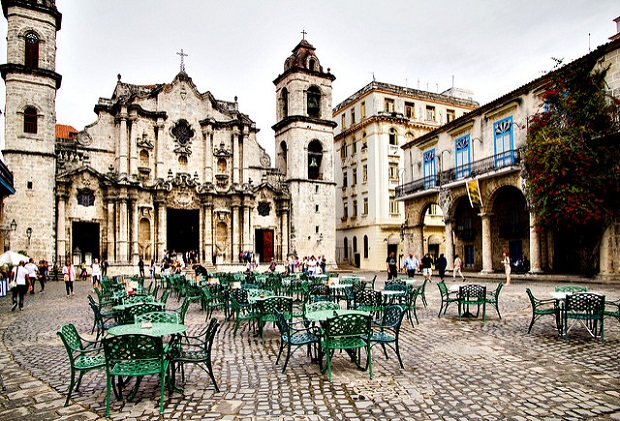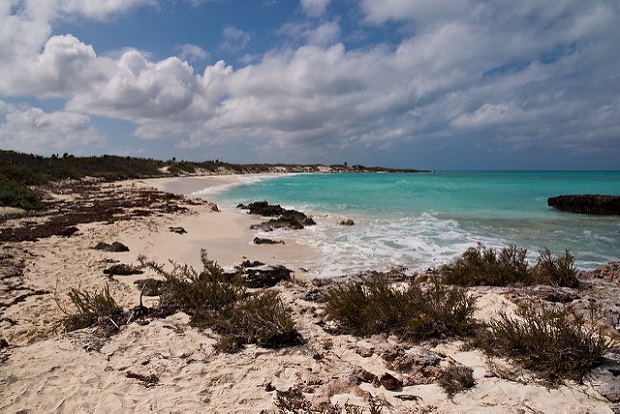CUBA is one of the world’s fastest growing tourist destinations – and with its diverse mix of vibrant urban nightlife, relaxing beaches and spectacular natural vistas, it’s not difficult to see why. The country is attracting more visitors than ever before and even the Kardashians gave the island (the largest in the Caribbean) their seal of approval when they drove around capital Havana in a hot pink convertible Cadillac. Havana, the countries capital, with a population of two million, recently got its first luxury hotel, the Grans Hotel Manzana Kempinski, which occupies an entire city block.

That’s at the pricier end of the spectrum, but there’s something to suit all budgets. Staying at a ‘casa particular’, the Cuban equivalent of a B&B, is an affordable way to explore the country and you can also expect authentic home-made local cuisine.
Havana is where many visitors start their Cuban experience – with its traditional colonial-era architecture juxtaposed with communist-style buildings, vibrantly decorated traditional houses and brightly coloured 1950s American cars. There is even a museum, Museo Del Automovil, dedicated to cars once owned by famous Cubans.
Old Havana has been declared a UNESCO World Heritage Site, and its unique architecture makes it a popular area to explore. It has been described as boasting the best colonial architecture in the Americas and the buildings in the area have been restored to ormer glories – with many being turned into hotels.
Meanwhile the Plaza de la Cathedral offers more sites of architectural interest, such as its 18th Century cathedral with baroque exterior.
There’s nightlife to be found all across the city with all varieties of traditional music covered, from salsa to Afro-Cuban. Havana’s most famous nightspot is the Tropicana. Founded in the 1930s it provides the sort of vibrant, feathers-and-sequins entertainment that is synonymous with the city – with shows performed nightly in an open-air theatre involving a troupe of 200 dancers. The ticket price even includes rum.
Other places of interest when it comes to sampling Havana’s traditional drinks include La Bodeguita del Medio and El Floridita, where Ernest Hemingway once guzzled his way through mojitos.
But there is more to Cuba than Havana – with plenty to offer those who are willing to spend some time exploring. The Vinales Valley offers wonderful natural scenery which can be explored on foot or horseback.
Tours of traditional tobacco farms are available and one casa particular, Villa Los Reyes, offers sunrise hiking tours – a nice way to take in the stunning landscape while spotting local bird life.
Other attractions in the area include the Mural de la Prehistoria – a huge artwork painted on rocks depicting the evolution of life in Cuba from the dawn of time to the present day. And underground cavern system the Cueva del Indio can be explored on a guided tour or subterranean boat ride.
Trinidad lies on Cuba’s central-southern coast and is another UNESCO World Heritage Site, boasting splendid Spanish colonial architecture. It is one of Cuba’s most beautiful towns – the centrepiece being the Plaza Mayor. Surrounded by statues of greyhounds, the square has several museums dedicated to Cuba’s pre-colonial history.
More cultural highlights are to be found at Santiago de Cuba at the east of the country. This is a multicultural town with a population of Spanish, Haitian and Afro-Caribbean descent. The Casa de la Trova features live music all day, there’s a museum dedicated to Santiago’s carnival – one of the biggest and most colourful in Cuba, held each July – and there’s also a museum celebrating Cuba’s relationship with rum.
It’s no surprise Cuba’s unique cultural heritage and striking landscapes are making it such a popular destination to visit – it has plenty to offer in addition to its renowned beach resorts. But, of course, those remain popular too.

Venture off the mainland and visit one of its 450 islands, which varies in sizes. Also known as cayos they are home to some of Cuba's most popular beach holiday resorts.
With their white sandy beaches and inviting seas there's no doubt they're a great location for a relaxing holiday, but sticking to a resort holiday may mean missing out on much else.
Divers flock to Cuba for good reason. Cayos Santa Maria, part of the jardines del Rey archipelago is host to several luxury resorts and boasts the world's second largest barrier reef. Divers and snorkelers can enjoy meeting the local marine life, including angel fish and barracuda; in part of a protected nature reserve with excellent diving conditions. There is plenty of wildlife to be seen; the islands are also home to turtles and a wide range of birdlife, including flamingos.
Cayo Coco has three beautiful sandy beaches which are popular with the holidaymakers who stay in nearby resorts and further inland are woodland which are home to hummingbirds while intrepid visitors can swim in picturesque lagoons.